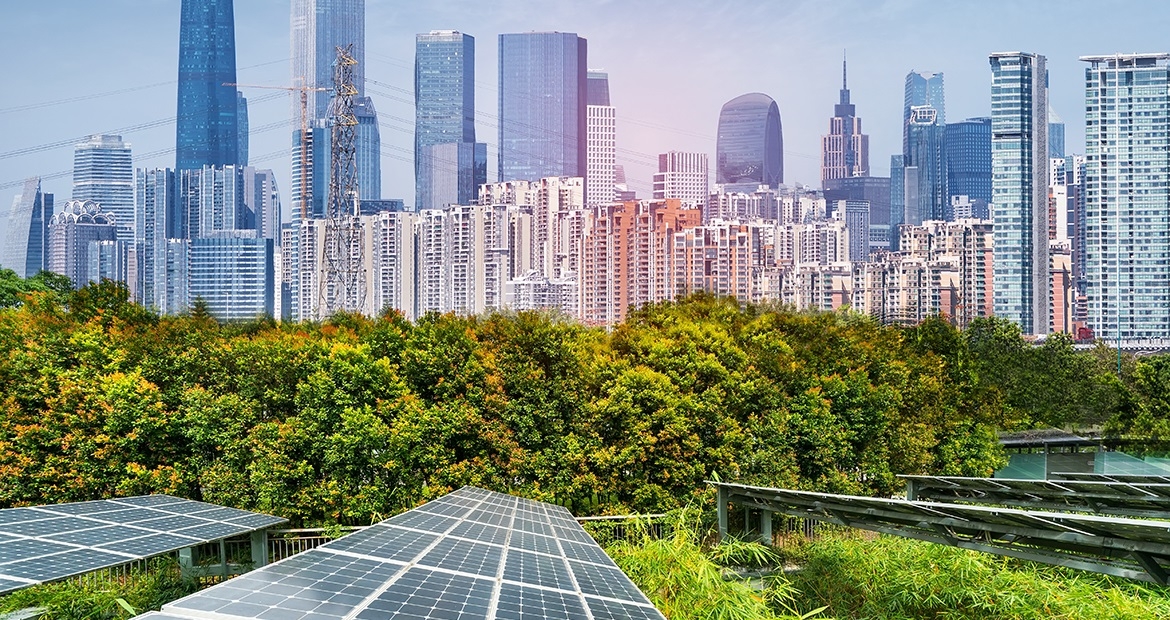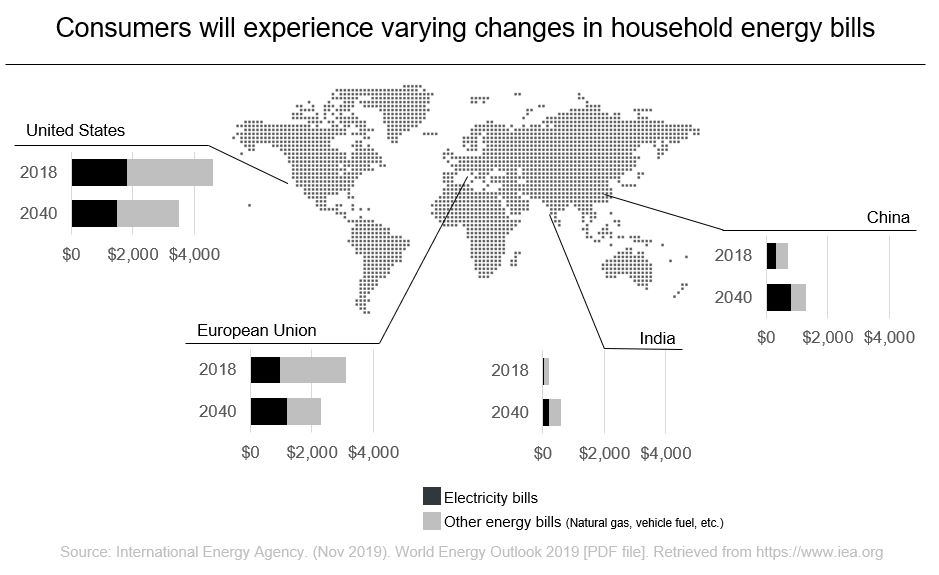Energy IQ: Six insights into the future of energy and sustainability every consumer needs to know – Part I
You likely spend over four thousand dollars a year or about 4% of your disposable income on energy bills, thus it is important to be more knowledgeable of your energy footprint both financially and environmentally.
By Aytek Yuksel, Content Marketing Leader - Power Systems

The International Energy Agency annually releases its World Energy Outlook with an objective of deepening our understanding of the future of energy. This report is over 800 pages, and has great insights around the future of energy. In this two-part blog post, we have summarized six insights every consumer needs to know when it comes to energy and sustainability.
No. #1: Energy related carbon emissions are expected to rise
While there is an increasing awareness across both consumers and policy makers on climate change and sustainability, this has not yet translated into impactful changes in nations’ stated policies to reverse the trend in carbon emissions.
Carbon emissions are critical for environmental sustainability, as carbon dioxide is a greenhouse gas that traps heat close to Earth. Too much carbon dioxide results in too much heat trapped close to Earth, which causes the Earth to get warmer.
The energy sector is the top contributor of carbon dioxide emissions and the sector is projected to increase its carbon dioxide emissions by 100 million tons a year until 2040, unless there are significant policy changes. A key reason behind this increasing carbon emissions is existing and newly installed coal plants. These coal plants are responsible for 33% of carbon emissions of the energy sector, and the majority of these plants are 20 years old or younger with decades of life ahead of them.
No. #2: Electricity use, one form of energy, increases with no increase in carbon emissions
We use energy every day in various forms, fuel to power our vehicles, natural gas to cook our food, and electricity is one of these forms of energy. While the carbon emissions of the energy sector is expected to rise, the story is different for electricity generation.
Our use of electricity will increase over 60% from now to 2040, much faster than our overall need for energy, yet the carbon emissions of electricity generation will remain stable at today’s levels. Increased use of renewable sources and efficiency improvements in natural gas fired power plants are two key levers to accomplish this.
No. #3: Affordability could be a key concern for consumers as our energy infrastructure gets increasingly electrified
Today, an average American household spends over four thousand dollars a year on energy bills. This includes the fuel for vehicles, natural gas for heating and cooking and electricity for lighting and appliances. While the consumers in advanced economies will experience their energy bills shrink, consumers in developing economies will experience the opposite. Households in India and China will see their energy bills more than double by 2040. This rise in energy bills will be driven by increased use of energy in developing economies, as consumers get more affluent and demand more services and products that use energy.
When it comes to electricity specifically, consumers are expected to pay more for electricity in most regions. This increase in electricity prices is partially driven by an increased use of technologies with zero or low fuel costs but high capital-intensive upfront costs.
As consumers, we each have our energy footprint and consequently have the option to shape this footprint. The insights captured here aim to equip you with more knowledge on your energy footprint. You can leverage these insights as you evaluate your next appliance purchase, or as you evaluate your expectations from your local policy makers.
Part II of this article will highlight the remaining three insights including comparing subsidies used for fossil fuels versus renewables. Sign up below for Energy IQ, to receive Part II and other relevant insights about energy management. To learn more about distributed generation solutions Cummins Inc. offers, visit our webpage.
Think your friends and colleagues would like this content? Share on LinkedIn and Facebook.
Author Profiles

Aytek Yuksel, Content Marketing Leader - Power Systems
Aytek is a marketing leader at Cummins, focusing on technology and thought leadership. Since joining in 2008, he has held various marketing roles and now shares insights on markets, technologies, and energy transition. Aytek lives in Minneapolis with his wife and two kids.
Related Tags